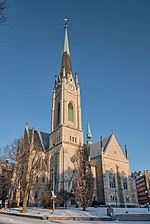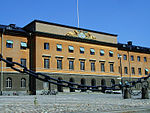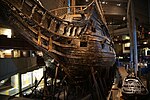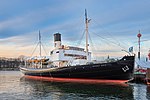Djurgårdsbron

Djurgårdsbron (Swedish: "The Djurgården Bridge") is a bridge in central Stockholm, Sweden. Designed by Carl Fraenell and built for the Stockholm World's Fair 1897, the present bridge forms a southern extension to the boulevard Narvavägen, thus connecting mainland Östermalm to the island Djurgården. It is one of four bridges stretching from Djurgården, the others being Djurgårdsbrunnsbron, Beckholmsbron, and Lilla Sjötullsbron. Featured on the bridge standing on tall granite columns are four Old Norse gods, sculpted by Rold Adlersparre: Heimdall blowing in his Gjallarhorn; Odin's wife Frigg holding a rod; Freyja with a falcon (one of her guises) in her hand; and Thor with his hammer Mjolnir resting on his shoulder. Flanking the pathways are cast iron railings displaying stylized plants and the abutments and candelabras designed by the architect Erik Josephson (1864–1929).
Excerpt from the Wikipedia article Djurgårdsbron (License: CC BY-SA 3.0, Authors, Images).Djurgårdsbron
Djurgårdsbron, Stockholm Djurgården (Östermalms stadsdelsområde)
Geographical coordinates (GPS) Address External links Nearby Places Show on map
Geographical coordinates (GPS)
| Latitude | Longitude |
|---|---|
| N 59.331 ° | E 18.094 ° |
Address
Djurgårdsbron
Djurgårdsbron
115 21 Stockholm, Djurgården (Östermalms stadsdelsområde)
Sweden
Open on Google Maps











